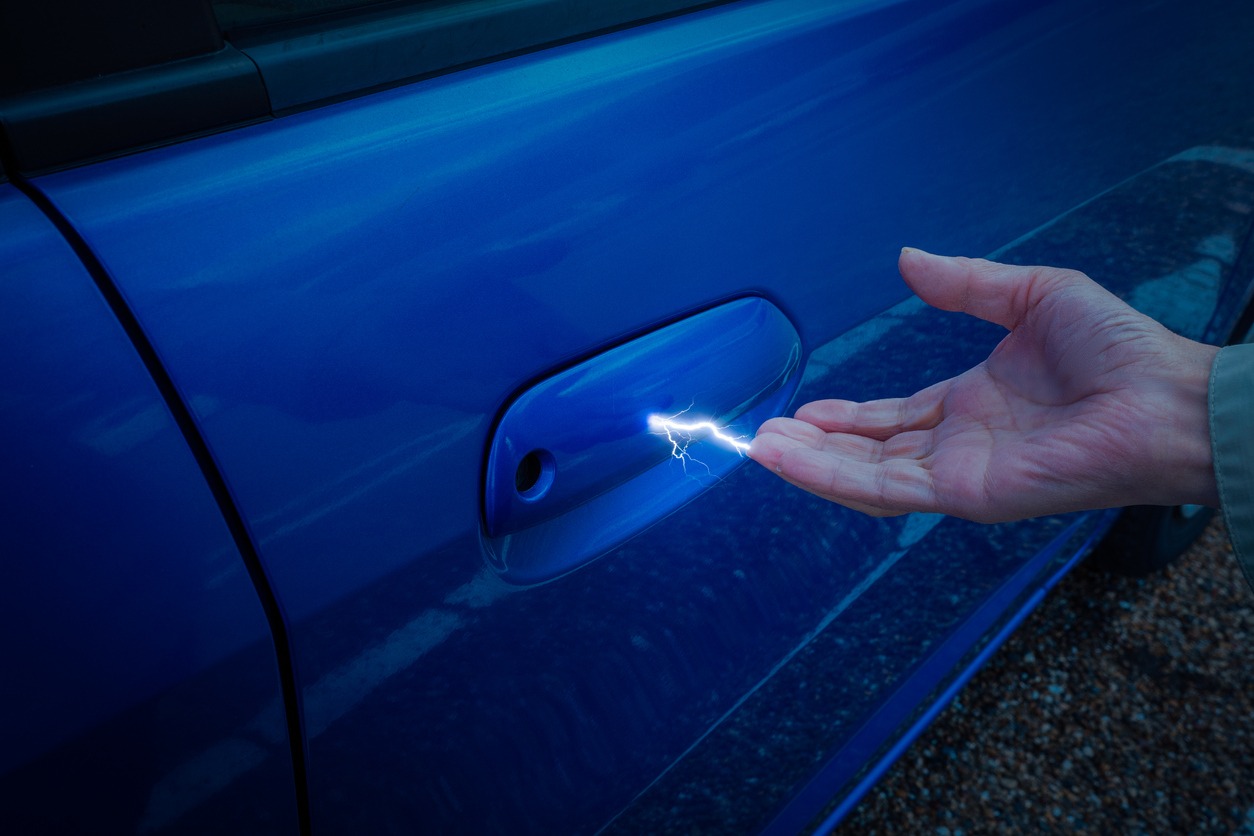Static electricity is something we can see every day. In fact, it can even build up on us. Have you experienced rubbing your feet on a carpet for instance, then zap something when you touch it? That is an example of having built up static electricity on the surface of our skin and discharging it to another object. Another example is when our hair gets charged and it sticks right up.
Static electricity is a disproportion of electric charges within or on the surface of a material. It is in contrast with current electricity, or the electricity which passes through wires and conductors that diffuses energy. One of the most powerful forms of static electricity is lightning.
History
Otto von Guericke discovered one of the first instances of static electricity in 1660, and the one who invented the electrostatic generator, which showed friction can create static electricity. It became a breakthrough because, at that time, no one knew how electricity could be generated. Though Alessandro Volta invented a chemical battery in 1800 which can be used to generate electricity, many scientists still found the electrostatic generator more efficient. They used it until Michael Faraday created the turbine in 1831. It could produce the same high voltage as the electrostatic generator. Benjamin Franklin had a theory in 1752 stating that lightning was the same as static electricity which is created by rubbing two dissimilar objects. He also performed a kite experiment, but some said it was a hoax. However, lightning was found to be one of the largest forms of static electricity.
What Causes Static Electricity?
Materials are made of atoms and are electrically neutral. It’s because they contain the same amount of positive charges and negative charges which are known as protons and electrons. So, how does static electricity occur? The phenomenon of static electricity needs a separation of protons and electrons. What happens is when two materials are in contact, there’s a tendency that electrons transfer from one material to the other. This leaves an excess of protons on one material, and an equal electron on the other. Once the materials are separated, they retain the imbalanced charges. It is said that the triboelectric effect causes static electricity. What is the triboelectric effect?
- Triboelectric Effect
Rubbing two different materials vigorously brings them into contact again and again which produces static electricity through a phenomenon called triboelectricity. As mentioned above, one material loses an electron while the other one gains an electron. Some examples for this are rubbing the glass with fur, and a plastic comb on hair. The strength of the charges depends on some factors such as material, temperature, surface roughness, strain, and other properties.
Is Static Electricity Useful?
Static electricity is useful in some ways and these are applied in the real world. For example, printers and photocopy machines use static electric charges to attract the ink or toner to the paper.
Static electricity is also used to remove dust particles on furnaces or heating appliances. Automotive shops also use static electricity when painting cars because it helps distribute the paint evenly throughout the vehicle. Static electricity is also used in industrial smokestacks because it helps limit the pollution brought into the air.
How Do You Remove or Prevent Static Electricity?
Removing or preventing static electricity to build up is simple. One of the easiest ways is to open a window or use a humidifier to increase the moisture content of the air. This will make the atmosphere more conductive. However, the winter time allows more shock since the air is dryer and the lack of moisture creates static.
Clothes can also contain static electricity. To remove static electricity from them, using a fabric softener before drying them can help. Since they rub on one another when placed in a dryer, it creates friction which eventually creates static charges. Fabric softeners can help prevent the clothes to stick together after being in a dryer, and there would be no static electricity that’ll shock you when you touch the dried clothes.
Static electricity is also the reason why electronic devices are packaged in some special conductive bags. It is because they are prone to be damaged by static electricity and these bags allow the charge to move away from the electronic device.
Though static electricity is something interesting to study and experiment with, remember that it can be dangerous too as it can cause sparks and trigger explosions. It can also ruin electrical components. As it turns out static electricity is more than that shocking annoyance we are all familiar with. It’s actually a part of our everyday lives ranging from the laundry to printing documents. Who knew!?
